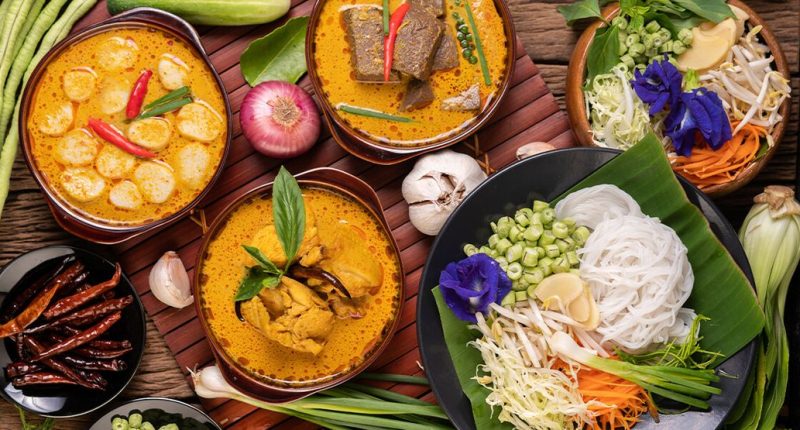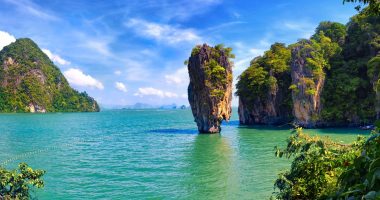Thailand is famous for its vibrant, flavorful street food and local cuisine. From spicy noodles to exotic fruits, there’s something for every palate. However, trying new foods in a foreign country can sometimes lead to digestive issues if you’re not careful. Here’s how to enjoy Thailand’s local cuisine safely while indulging in the best flavors the country has to offer.
How to Experience Thailand’s Local Cuisine Safely
Exploring Thailand’s local cuisine is an essential part of your travel experience, but it’s important to take precautions. This guide will help you enjoy authentic Thai dishes without risking your health.
Choose Food From Clean and Trusted Vendors
When sampling street food in Thailand, selecting a vendor is crucial for a safe and delicious experience.
Look for Busy Food Stalls
Vendors with long lines of locals are generally a safe bet. High turnover means the food is fresh, and the locals often know where to find the best and safest options.
- Tip: Observe how the vendor handles food, whether they wear gloves, and if they have clean cooking equipment.
Go to Night Markets
Night markets are great places to try authentic Thai dishes in a hygienic setting. Popular markets like Bangkok’s Chatuchak Weekend Market or Chiang Mai’s Sunday Night Market are well-known for clean and high-quality food.
Be Cautious With Raw or Undercooked Food
Thai cuisine includes a variety of raw or partially cooked dishes, such as Som Tam (papaya salad) and Larb (a spicy minced meat salad). While delicious, these can sometimes pose health risks if improperly prepared.
Stick to Cooked Dishes
While raw dishes can be tempting, it’s safer to stick to fully cooked meals to avoid any potential foodborne illnesses. Popular cooked dishes include:
- Pad Thai: Stir-fried noodles with shrimp or chicken.
- Tom Yum Goong: Spicy shrimp soup.
- Khao Pad: Thai-style fried rice.
Be Cautious With Seafood
Seafood is a staple in Thai cuisine, but make sure it’s fresh and well-cooked. Avoid eating seafood from vendors with poor hygiene standards, especially in very hot weather.
Stay Hydrated, But Watch Out for Tap Water
Staying hydrated is essential when traveling in Thailand’s hot climate, but you should be careful about your water sources.
Avoid Tap Water
Thailand’s tap water is generally not safe for drinking. Always drink bottled water, which is widely available and inexpensive.
- Tip: Ensure the seal on bottled water is intact when purchasing it.
Be Cautious With Ice
While many restaurants and vendors use safe ice, it’s good practice to ask if the ice is made from purified water. The larger, cylindrical ice is usually safe as it’s manufactured in factories with quality controls.
Learn About Common Thai Food Allergens
Thai cuisine often uses ingredients that can trigger allergies, such as peanuts, shellfish, and soy products.
Watch Out for Peanuts and Shellfish
Dishes like Pad Thai and Massaman Curry frequently contain peanuts, and seafood is common in soups and stir-fried dishes. If you have an allergy, communicate this clearly to the vendor.
- Tip: Learn how to say your allergies in Thai, or carry a card with translations to show vendors.
Be Aware of Spices
Thai food is known for its bold spices. If you’re not used to spicy food, ask for your dish to be prepared mai phet (not spicy) to avoid discomfort.
Use Common Sense With Food Storage and Handling
When traveling in a tropical climate like Thailand’s, food spoils more quickly. Proper storage and handling are essential to avoid illness.
Avoid Leftover Street Food
While it might be tempting to save leftover street food for later, it’s safer to eat it fresh. Foods that sit out in the heat can quickly become unsafe.
Eat at Clean Restaurants
When dining at sit-down restaurants, opt for places that appear clean and are busy. Restaurants that cater to both locals and tourists are usually a good sign of quality and safety.
Tips for Eating at Local Thai Restaurants
Thai restaurants offer an authentic dining experience, but there are a few things to keep in mind.
Use Cutlery and Avoid Direct Hand Contact
In most Thai restaurants, you’ll be provided with a fork and spoon. Use these to handle your food rather than your hands, which minimizes the risk of contamination.
Bring Hand Sanitizer
It’s a good idea to carry hand sanitizer with you, especially if you’re eating at outdoor markets or food stalls where soap and water may not always be available.
Conclusion: Enjoying Thailand’s Cuisine Safely
Thailand’s local cuisine is a rich part of its culture, offering everything from savory street food to fresh seafood dishes. By choosing clean vendors, avoiding tap water, and being cautious about food allergies and storage, you can safely savor all that Thailand has to offer.









